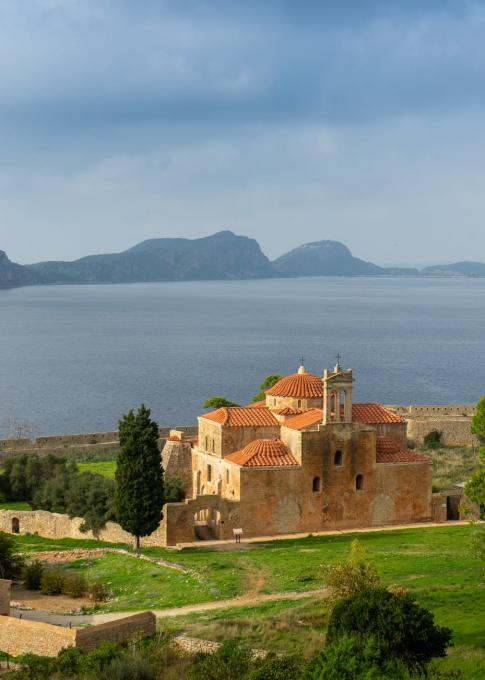
About 11 miles north of the village of Pylos is the Anaktora Nestoros, or the Palace of King Nestor of Pylos, a wise old king who commanded a large fleet of ships at the Siege of Troy. After his return from the Trojan War, Nestor received Telemachus here, when he came to ask for news of his father, as detailed in The Odyssey by Homer.
The Trojan War was a legendary conflict from Greek mythology that took place around the 12th or 13th Century BC. The buildings at Anaktora Nestoros were destroyed in the 12th Century BC, so it’s a plausible story that a king from here went to Troy and returned before invaders destroyed his palace.
What is unusual about the Palace of Nestor is that a roof protects the whole site from the elements. It’s not a massive tent as at Bassae, but there are walkways above the various rooms of the palace, so you can peer into history from above and get a better idea of the layout of the site.
Archaeologists found approximately one thousand clay tablets in two archive rooms at the site, tablets that contributed significantly to the understanding of the Mycenaean language, the earliest known format of the Greek language.
Visitors can also spot an original bath in the queen’s apartments and storage jars set into the ground. From the car park, there’s a path to a small, reconstructed Mycenaean tholos tomb.
The major site in Pylos itself is the new castle or Niokastro with a set of sturdy walls, and visitors can walk around them almost all the way. There are three museums and a church. One museum has items related to the struggle for Greek independence, another details submerged towns in the area, and a third has details about several local shipwrecks.
Talking of ships, the Battle of Navarino, took place on the 20th October 1827 in the local bay of Pylos, indeed the guns from the Niokastro took part in this decisive naval engagement of the War of Greek Independence to support the Turkish and Egyptian fleet.
